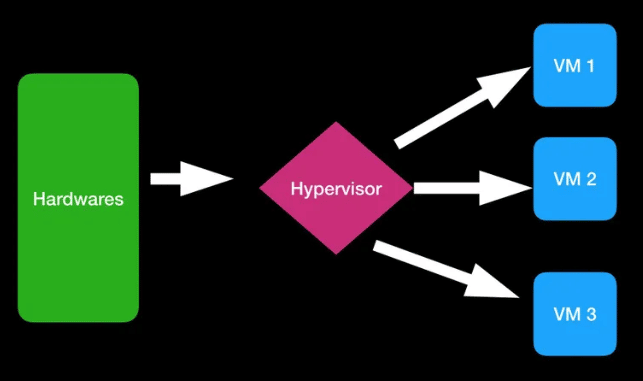VMWare provides a bare metal hypervisor that allows you to partition your physical server into 2 or more virtual servers. This installs a layer between the bios and the operating system, and allows you to run multiple servers with multiple different types or versions of Operating systems.

VMWARE is designed to work with Intel/AMD based servers, like the Dell PowerEdge, and the HP Proliant series. Using Dell as an example, you can take a standard dual-proc Dell R740 rack server, and partition it into 3 virtualized servers:
- Server 1 might run Windows Server 2020.
- Server 2 might be a dedicated Apache web server
- Server 3 might run Windows 2008 legacy software products that have been discontinued and don’t have a path for upgrade.
VMWare offers a few different levels of hypervisor for physical servers, but we will focus on these 3:
- ESXi (Free)
- VMWare Essentials (at the time of this writing, cost from VMware is approx $600 annual)
- VMWare Essentials Plus (at the time of this writing, cost from VMware is approx $6,000 annual)
Let’s start with ESXi Free version. You can download this direct from VMWare, create an account, and within minutes, have a virtualized server up and running. It is a great product for basic virtualization needs. If the server does not serve a production or mission critical purpose, the free version is a good product to use. It is great for home lab, test lab, secondary/backup servers, and other non-critical uses. The main drawback to ESXi free version is the lack of backup API, and no snapshotting capability. There are work-around methods that can be found online, but the feature is not, and likely will not be native to the free platform.
Here is a chart to compare the features of the free version vs the upgraded vsphere hypervisor essentials:
Feature |
ESXi (Free) |
vSphere Essentials |
Maximum physical CPUs |
2 |
768 (logical) |
Maximum physical memory |
16TB |
16TB |
Maximum vCPUs per VM |
8 vCPUs |
256 vCPUs |
Maximum vRAM per VM |
6TB |
6TB |
VMWARE Support Available |
No |
Various SLAs available |
Central Management (vCenter) |
No |
Supported |
High Availability (HA) |
No |
Supported |
Storage/Backup API usage (VADP) |
No |
Yes |
Live migration of VMs (vMotion) |
No |
Supported |
Load balancing of VMs (DRS) |
No |
Supported |
Essentials Plus
Essentials plus is for the organziation that requires 100% uptime. B oth Essentials and Essentials Plus come with vCenter Server management, and the licensing covers the same number of phyical servers (3 each, 2 procs per server allowed).
The focus of Essentials Plus is business continuity. Essentials includes only the ESXi hypervisor. However, Essentials plus includes the following VMWARE products: ESXi, vMotion, High Availability, vShield Endpoint, vSphere Replication.
If you run a business where customers rely on your servers to be up 100% of the time, Essentials Plus is the way to go. If your server is more of a fileshare with no mission-critical function, it is likely that Essentials will suit your needs just fine. It should be noted, you are always able to upgrade your license at a later date if you find that the additional reliability features are useful to you.
Share
MAY
